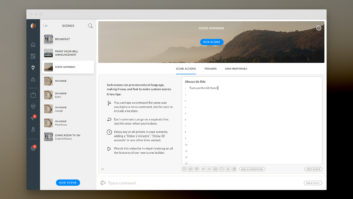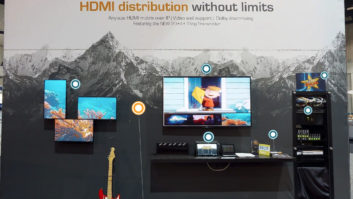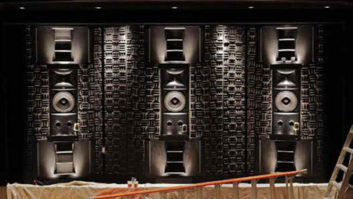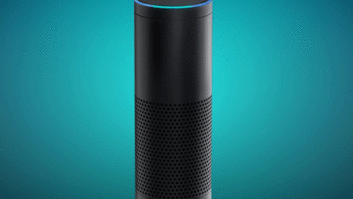I just returned from the 2003 Consumer Electronics Show (CES) in Las Vegas, only to be asked, as usual, “What new and exciting things did you see?” Ironically, I didn’t really see any one thing that really rocked my boat. What I was impressed with was the progress that has been made in the area of interoperability between products.
Specifically a very important development is the evolution of bi-directional interface capabilities in some mass-marketed consumer audio/video products. I was extremely impressed by the skillful implementation of an EIA232 interface in Denon’s new line of receivers. Many companies offer 232 interfaces, but few have done as good a job as Denon. The response is very tactile and the feedback is very fast with almost no latency. Although I didn’t see the same level of performance as I did at the Denon booth, a number of companies were demonstrating their two-way interfaces including Marantz, Yamaha and others.
For years I have been lobbying for the development of retrofit, localized dimmer wallplates with buttons that are logically independent of the dimmer to which they are mounted, and are all based on some form of “open standard” wireless bi-directional network technology, perhaps Wi-Fi, Echelon LonWorks, or CEBus. Even though my idea of an ideal product has not yet materialized, I do appreciate the progress being made in the area of retrofit lighting dimming systems. Vantage now offers its lower-priced “RadioLink” line and Lutron has offered its “Radio RA” products for a few years now. Although these products are both based on proprietary control technologies, they do offer the ability to be connected to control systems like Crestron, AMX and others, via an EIA232 interface.
One of the highlights for me personally was the opportunity to deliver a presentation titled, “Smart Homes for Dummies” and specifically to present the CEA TechHome Division’s “TechHome Rating System.” Last year I had the pleasure to participate on the committee that fine-tuned and completed the system, which was originally created by the CEA HNIT division. For those of you who have not heard about this new development, the possibilities that this new rating system offers are immense.
In a nutshell, what this rating system does is provide a tool to rate any home’s level of technology from 0 to 10. Focusing on the permanently installed infrastructure, it addresses all areas of installed systems, including audio, video, satellite, telephones, computer networks, high-speed Internet access, security, home control, HVAC control, energy management and structured wiring. The easy-to-understand form is designed so that people who are not familiar with any of these technologies can fill it out on their own. Our goal was that someone could complete the form for the first time in about 30 minutes, and much less for each home after the first.
This is not a rating system for quality level, specific brands, or even to define how many rooms are prepared for technology, but rather it is a very simple, basic method to provide a preliminary understanding of how prepared for technology a home might be. It is designed so that anyone can understand and use the system, especially those who are not familiar with or even interested in technology.
There are a number of different audiences for the TechHome Rating System, starting with home builders, developers, real estate professionals and last, but not least, systems integrators. Homeowners can also use the form to rate their own homes.
The people who created this system include manufacturers, distributors, systems integrators, industry supporters and the skilled staff at the Consumer Electronics Association. Input was garnered from builders and from people in the real estate industry.
The expected results of the adaptation of the rating system are significant. It is our vision that one day all new developments and individual new homes will be rated. This information will be helpful for all those who participate in the construction and sales of the homes to understand what level of technology the homes are prepared for. It provides some common language with definitions so that we can all describe these features similarly, as opposed to the many different words and descriptions that are now used to define the same things. This rating will likely become an important sales tool, both for new homes and for people when re-selling their homes as well.
First and foremost, this is an education and awareness tool. An important side benefit will be that as awareness increases on the part of the public and with those who design and build homes, the demand for our services will increase. As we all know, our market penetration in terms of the number of homes, both new and existing, is a small percentage of the total.
For a downloadable version of the TechHome Rating system, go to www.ce.org/shared_files/initiatives_attachments/211TechHomeRatingBrochure.pdf. Please let me know what you think.
David Epstein ([email protected]) is the founder and president of SEi/Sound Solutions, in Santa Monica, California.







